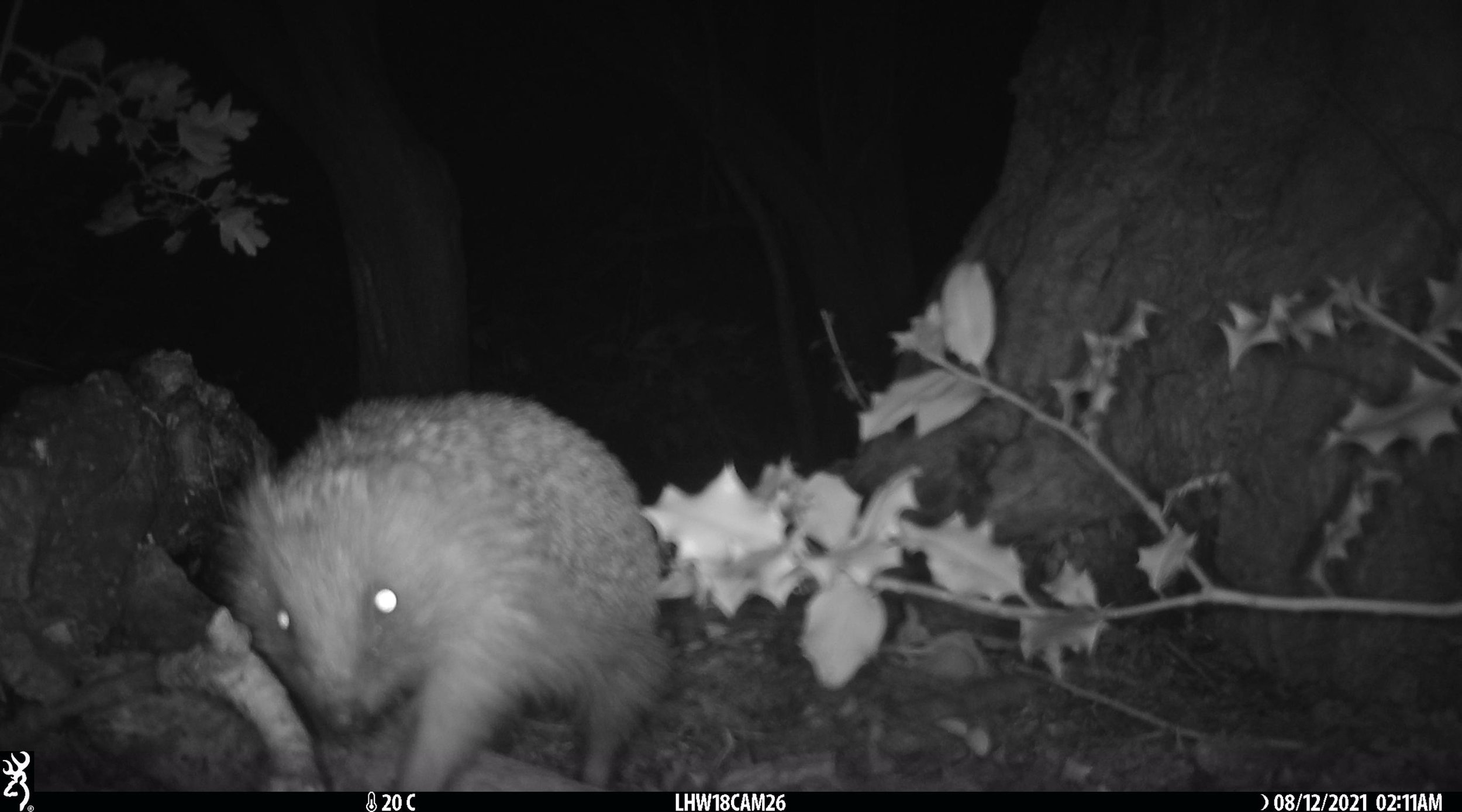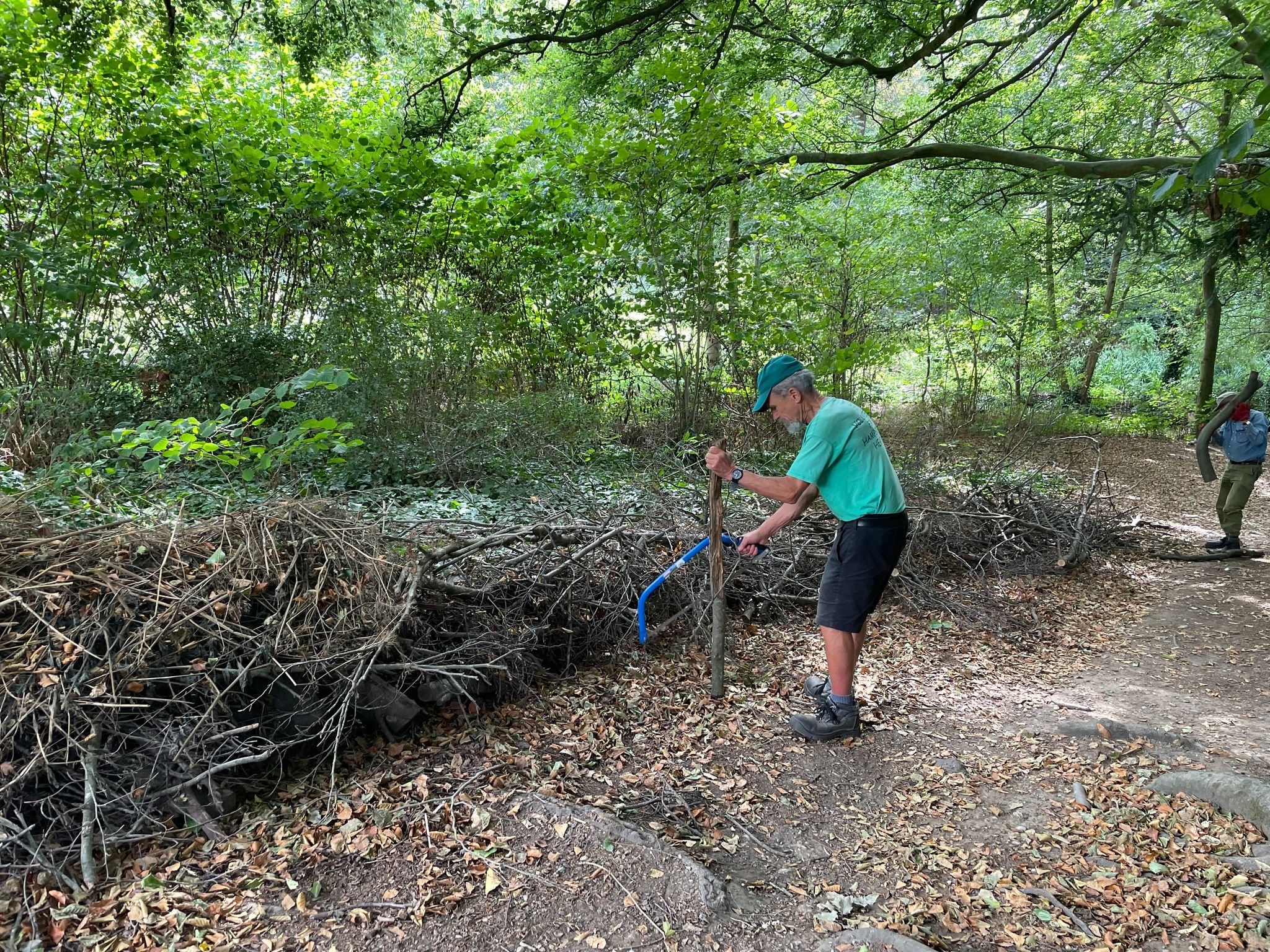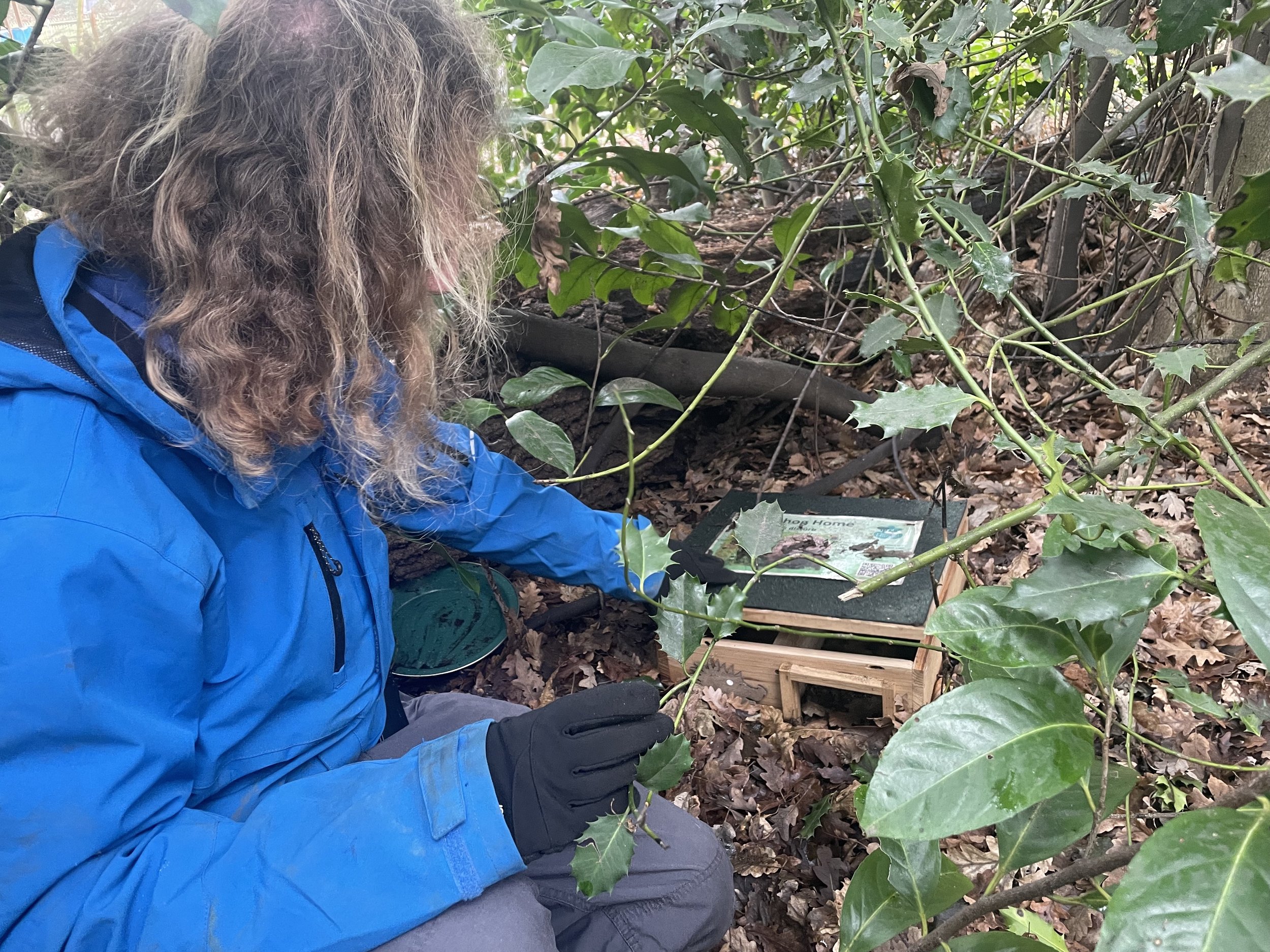Hedgehog Friendly Heath
Earlier this month, we celebrated Hedgehog Awareness Week on our social media channels and launched our new project – Hedgehog Friendly Heath. For this project, we will be working with local residents, organisations and schools to help improve hedgehog connectivity, make biodiversity improvements for hedgehogs (and other species) on and around the fringes of the Heath and inspiring local people to protect hedgehogs and other wildlife species around the Heath.
Hedgehogs have been declining in both rural and urban habitats, and we have lost around a third of the national population since the millennium. In 2020, Hedgehogs were listed as ‘vulnerable to extinction’ on the UK red list for mammals.
In the State of Britain’s Hedgehogs report 2022 it was revealed that in urban areas there may be a stable population of hedgehogs that might be recovering. This highlights the importance of local action and urban green spaces to ensure the future of hedgehogs.
Hedgehog photographed on one our monitoring camera traps on Hampstead Heath
Hedgehogs on the Heath
Did you know that Hampstead Heath is home to one of the largest populations of hedgehogs in London?
In 2021, we joined forces with ZSL London Hogwatch to help carry out hedgehog surveys. During these surveys we placed 150 camera traps across the heath. This method of surveying requires minimum disturbance to the hedgehogs and we are able to capture their natural behaviour. There were hedgehog sightings across the Heath and the results were amongst the highest recorded values for hedgehogs within a green space in Greater London.
We would like to say thank you again to the Hogwatch team and all our volunteers that helped with these surveys.
Hedgehog Habitats
Hedgehogs like a wide range of habitats, from wooded areas to open green spaces and even our gardens!
The size of the Heath and the way it is managed with rough grassland, bramble thickets and dense hedgerows are likely factors that make it good for hedgehogs.
During the lockdowns the Heath became especially busy, and this resulted in some disturbance to the hedgerows and compaction of the ground, impacting on vegetation. In the last couple of years we’ve been working to block off existing hedgerows and plant new ones to increase suitable habitats for our hedgehogs and other wildlife.
Depending on the time of the year hedgehogs will nest in different areas. In the winter months hedgehogs will often nest in brambly areas, leaf or log piles and even compost heaps. These areas are great for hibernation. In the summer months, hedgehogs will use temporary day nests which could be in long tufts of grass. This makes them vulnerable to strimming and mowing – so please always check before you start cutting your grass.
Did you know the Heath is home to over 24 purpose-built hedgehog homes?
To help provide safe spaces for hedgehogs to nest, we have been installing a mixture of designs of hedgehog boxes, either from repurposed wood or more easily assembled designs. You can support our work by adopting a hedgehog house on the Heath.
What to do if you find a hedgehog on the Heath
Hedgehogs are nocturnal, so this means they are often only seen at night. However, hedgehogs are coming out of hibernation and getting ready for the breeding season. This means you may see a female hedgehog in the day looking for nesting material or food for her young. If the hedgehog looks like it is walking with a purpose, please leave alone and monitor from a distance.
If you see a hedgehog out in the day that looks very small, wobbly, obviously injured, trapped, or has flies on it the hedgehog will need help. If you are concerned about a hedgehog on the Heath, please contact one of the rangers or email us.
Please note: Hedgehogs are very prickly and can carry diseases, so please do not pick up with your bare hands!
Sick hedgehog found on Kenwood Estate
Hedgehog Connectivity
One of the reasons for hedgehog decline in urban areas is impermeable garden fencing and walls that limit the area of connected land available. As previously mentioned, the Heath is home to the largest population of hedgehogs in London. We do not want our hedgehogs to be an isolated population, so we have been looking at how we can connect the Heath to other local green spaces. We are in the process of mapping barriers to hedgehogs and thinking of ways we can reduce these. One way we are hoping to do this is by encouraging local green spaces (including gardens) to make Hedgehog Highways. A hedgehog highway is simply a 13 by 13cm hole in a fence to allow hedgehogs to pass freely through and allowing them to reach different habitats.
If you have spotted a hedgehog in your garden or in a local green space near the Heath we would love to know or if you would like more information on how to create a hedgehog highway, please get in touch via the contact form on our project webpage.






